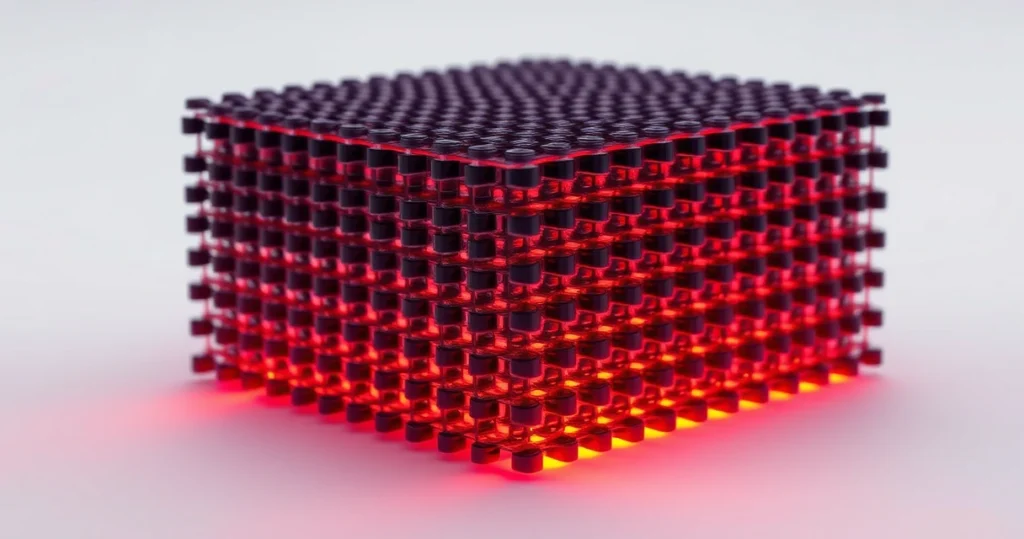In an astonishing breakthrough, researchers have developed a metamaterial that challenges the fundamental laws of thermodynamics. This innovative material emits infrared light more efficiently than it absorbs heat, effectively breaking the established balance between heat absorption and emission. This article delves into the properties of this metamaterial, its implications for various industries, and its significance in the ongoing discourse surrounding physics and thermodynamics.

The study of metamaterials has gained traction over the years, promising advancements across multiple fields, including telecommunications, imaging, and energy harvesting. By manipulating electromagnetic waves in unique ways, these materials can exhibit properties not found in nature. The latest development in this realm not only piques scientific curiosity but also opens doors for practical applications that could reshape our understanding of heat transfer and energy efficiency.
Understanding Metamaterials
Metamaterials are engineered substances designed to have properties that do not exist in naturally occurring materials. They achieve this through their unique structural composition, which allows them to manipulate electromagnetic waves in unconventional ways. The most common applications of metamaterials have been in optics, such as creating invisibility cloaks or enhancing imaging systems.
The Science Behind Metamaterials
At the core of metamaterials is the concept of negative refractive index, where waves are bent in the opposite direction compared to conventional materials. By structuring these materials at a scale smaller than the wavelength of the electromagnetic radiation they interact with, researchers can control how they respond to light, heat, and other forms of energy.
Breaking the Laws of Thermodynamics
The newly developed metamaterial has created a stir in the scientific community by seemingly violating the second law of thermodynamics, which states that heat will always flow from a hotter object to a cooler one until thermal equilibrium is reached. This law underscores the natural tendency for systems to move towards increased entropy.
The Mechanism of Heat Emission
This metamaterial operates on principles that allow it to emit infrared radiation more efficiently than it absorbs heat from its surroundings. This means it can potentially cool itself below the ambient temperature, a phenomenon typically considered impossible. The mechanism behind this includes engineered structures that enhance light-matter interactions, allowing for a more rapid emission of heat in the form of infrared radiation.
Potential Applications of the Metamaterial
The implications of such a metamaterial extend far beyond academic interest. Here are several potential applications:
- Energy Efficiency: This metamaterial could be used to create systems that reduce energy consumption by improving heat management in buildings and electronic devices.
- Cooling Technologies: The ability to emit more heat than absorbed could lead to the development of advanced cooling systems that operate without traditional energy input, such as refrigeration units that do not require electricity.
- Thermal Imaging: Enhanced infrared emission could improve thermal imaging technologies, leading to better applications in surveillance, search and rescue operations, and environmental monitoring.
- Wearable Technology: The development of smart fabrics infused with this metamaterial could lead to clothing that helps regulate body temperature more effectively.
The Challenges Ahead
Despite the promising prospects of this metamaterial, challenges remain in its practical implementation. One of the primary hurdles is scalability; producing this material in commercially viable quantities while maintaining its unique properties is crucial for real-world applications. Additionally, researchers must explore the long-term stability and durability of the metamaterial to ensure it can withstand various environmental conditions.
Research and Development
Ongoing research is essential not only for refining the material itself but also for understanding the full implications of its properties. Scientists are exploring how this metamaterial could be combined with other technologies to create synergistic effects, potentially leading to groundbreaking innovations in energy management and thermal regulation.
Frequently Asked Questions (FAQs)
1. What is a metamaterial?
A metamaterial is an engineered material designed to have properties that do not occur naturally, allowing for unique interactions with electromagnetic waves.
2. How does the new metamaterial emit more heat than it absorbs?
This metamaterial enhances light-matter interactions, allowing it to emit infrared radiation more efficiently than it absorbs heat from its surroundings.
3. What are the potential applications of this metamaterial?
Potential applications include energy-efficient systems, advanced cooling technologies, improved thermal imaging, and smart fabrics for temperature regulation.
4. Does this metamaterial violate the laws of thermodynamics?
While it challenges traditional interpretations of thermodynamics, the metamaterial operates under engineered conditions that allow for its unique properties.
5. What are the challenges in implementing this metamaterial in real-world applications?
Challenges include scalability, long-term stability, and ensuring that the material maintains its unique properties over time and under various conditions.
Conclusion
The development of a metamaterial that emits more heat than it absorbs represents a significant breakthrough in the field of physics and materials science. While it poses challenges to classical thermodynamic principles, it also presents exciting opportunities for technological advancements. As researchers continue to explore the potential applications and refine the material, we may soon witness a transformative shift in energy management, cooling technologies, and beyond. This metamaterial could pave the way for innovations that not only enhance efficiency but also contribute to a more sustainable future.
📰 Original Source
Este artigo foi baseado em informações de: https://olhardigital.com.br/2025/07/04/ciencia-e-espaco/novo-material-desafia-lei-da-fisica-ao-emitir-mais-calor-do-que-absorve/



